
Shape Memory and Superelasticity
Scope & Guideline
Pioneering discoveries in materials engineering.
Introduction
Aims and Scopes
- Shape Memory Alloys (SMAs) Development:
The journal highlights advancements in the composition, processing, and performance of SMAs, including various alloys like NiTi, Cu-Al-Ni, and Fe-based SMAs. - Thermomechanical Behavior Analysis:
Research on the thermomechanical properties of SMAs is a core area, focusing on how these materials respond to changes in temperature and mechanical stress. - Modeling and Simulation Techniques:
The journal publishes studies utilizing numerical models, atomistic simulations, and finite element analysis to predict the behavior of shape memory and superelastic materials. - Characterization Techniques:
Papers often detail experimental techniques such as synchrotron diffraction, electron microscopy, and acoustic emission to characterize the microstructural and mechanical properties of SMAs. - Applications and Engineering:
The journal explores the application of SMAs in various fields including medical devices, aerospace, automotive design, and energy systems, emphasizing practical engineering solutions. - Elastocaloric Effect Research:
A unique contribution of this journal is its focus on the elastocaloric effect in SMAs, exploring their potential for energy-efficient cooling and heating systems.
Trending and Emerging
- High-Entropy Alloys:
Recent publications show a surge in research on high-entropy shape memory alloys, which offer enhanced properties and broader performance ranges. - Additive Manufacturing Techniques:
There is a growing interest in additive manufacturing (3D printing) of SMAs, with studies exploring how these techniques can optimize material properties and design. - Elastocaloric Cooling Applications:
Research on elastocaloric cooling systems is emerging as a significant trend, highlighting the potential for SMAs in energy-efficient thermal management solutions. - Data-Driven Approaches:
The application of data-driven methodologies and machine learning techniques for the design and optimization of SMAs is gaining traction, indicating a modern shift towards computational materials science. - Functionalization of SMAs:
Studies focusing on the functionalization of SMAs for specific applications, such as bioengineering and robotics, are increasingly prevalent, showcasing the versatility of these materials.
Declining or Waning
- Traditional Shape Memory Alloys:
Research focused solely on traditional NiTi-based shape memory alloys has seen a decline, as newer materials like high-entropy alloys and novel compositions gain attention. - Basic Theoretical Studies:
Papers that focus predominantly on theoretical aspects without experimental validation are becoming less frequent, indicating a shift towards more applied and experimental research. - Low-Temperature Applications:
Interest in low-temperature applications of shape memory alloys is waning, possibly due to the increasing focus on high-performance materials for extreme conditions. - Corrosion Studies:
While important, studies centered exclusively on the corrosion behavior of SMAs are decreasing, as the field increasingly emphasizes multifunctional properties and applications.
Similar Journals
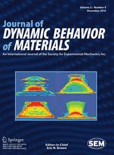
Journal of Dynamic Behavior of Materials
Fostering Breakthroughs in Material Behavior ResearchThe Journal of Dynamic Behavior of Materials, published by SpringerNature, serves as a premier platform for the dissemination of innovative research in the fields of materials science and mechanics of materials. With its ISSN 2199-7446 and E-ISSN 2199-7454, this international journal has established itself since its inception in 2015, showcasing groundbreaking insights into the dynamic properties and behaviors of various materials. Operating from Switzerland and headquartered in London, this journal embraces an open-access philosophy, albeit not entirely, to enhance research visibility. According to the Scopus rankings, it is positioned in the Q3 quartile for both materials science and mechanics of materials, indicating its growing prominence in the academic landscape. Researchers and professionals alike benefit from its wide-ranging contributions that address contemporary challenges and advancements, making it a critical resource for advancing knowledge and innovation in these crucial fields.

Physical Mesomechanics
Advancing the frontiers of materials science and mechanics.Physical Mesomechanics is a distinguished journal published by SPRINGER, focusing on the interdisciplinary field of condensed matter physics, materials science, and mechanics of materials. With an ISSN of 1029-9599 and an E-ISSN of 1990-5424, this journal serves as an essential platform for researchers, professionals, and students to share and disseminate high-quality research findings. It is recognized for its significant impact, boasting a Q2 ranking in 2023 across multiple categories including Condensed Matter Physics and Materials Science, ensuring a substantial scholarly contribution to the field. Despite being a subscription-based journal, its reputation within the academic community remains robust, underlined by its comprehensive coverage of topics related to the behavior of materials at the mesoscopic scale. The journal promises to further enhance its importance in the scientific dialogue by encouraging submissions that push the boundaries of current knowledge from 2004 to 2024, fostering innovation and collaboration among researchers globally.
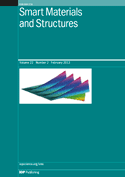
Smart Materials and Structures
Pioneering Research in Smart Materials and StructuresSmart Materials and Structures, published by IOP Publishing Ltd, is a leading journal in the realms of engineering and physics, with an impressive reputation for disseminating transformative research relevant to Atomic and Molecular Physics, Civil and Structural Engineering, Condensed Matter Physics, Electrical and Electronic Engineering, and Materials Science. Since its inception in 1992, this journal has become a cornerstone in the study of innovative materials and their potential applications in various domains. With a remarkable impact reflected in its Q1 rankings across multiple categories for 2023 and its notable Scopus standings, Smart Materials and Structures serves as an essential platform for scholars and practitioners aiming to stay at the forefront of material science advancements. Although the journal operates under traditional access, it ensures that critical findings and methodologies in smart materials are readily available to a global audience, fostering collaboration and innovation in technology and engineering. Respected for its rigorous peer-review process, the journal encourages submissions that present original research, review articles, and significant case studies that can lead to groundbreaking developments in smart material applications.

ACTA METALLURGICA SINICA
Pioneering Insights in Metals and AlloysACTA METALLURGICA SINICA, established in 1978 and published by SCIENCE PRESS, stands as a preeminent journal in the fields of metallurgy and materials science. This journal is particularly revered for its contributions to Metals and Alloys, Mechanical Engineering, Geotechnical Engineering, and Mechanics of Materials, with a commendable Q1 ranking in Metals and Alloys and notable placements in other engineering disciplines. With a robust history of facilitating scholarly communication from 1978 to 1991 and consistently since 1996, the journal provides a vital platform for researchers and practitioners to disseminate significant advancements in material science. Despite being a subscription-based journal, ACTA METALLURGICA SINICA remains pivotal, holding a Scopus ranking that places it in the top tiers of its categories, fostering an environment ripe for innovation and collaboration. This ensures that the journal remains central to the ongoing discussions and developments within the metallurgy community, serving both academic and professional interests.

TRANSACTIONS OF THE INDIAN INSTITUTE OF METALS
Bridging theory and practice in metallurgy.TRANSACTIONS OF THE INDIAN INSTITUTE OF METALS is a premier journal published by Springer India, dedicated to the field of metallurgy and materials science. Established in 1969, this journal serves as a vital platform for researchers and professionals to disseminate their findings on metals and alloys, showcasing innovative studies and experimental techniques. With an impressive impact factor and categorized in the Q2 quartile for metals and alloys as of 2023, it ranks 70 out of 176 in its field according to Scopus, placing it in the 60th percentile. The journal maintains a robust reputation for fostering academic excellence, thus attracting contributions from both established and emerging scholars. Though not an open access publication, its well-curated content remains a crucial resource for advancing knowledge and technology in metallurgy. The journal's extensive operational history, particularly during notable converged years, underscores its enduring significance in the scientific community.
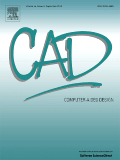
COMPUTER-AIDED DESIGN
Exploring the Intersection of Technology and DesignCOMPUTER-AIDED DESIGN is a premier journal published by Elsevier Science Ltd, dedicated to the dynamic fields of Computer Graphics and Computer-Aided Design, as well as Industrial and Manufacturing Engineering. With a long-standing history since its inception in 1968, this journal plays a vital role in disseminating high-quality research and innovative methodologies that shape the future of design and engineering practices. It is positioned in the upper quartiles (Q1 and Q2) across multiple categories, highlighting its impact and reputation, with a notable 74th percentile ranking in Computer Graphics and Computer-Aided Design related fields. Researchers, professionals, and students will find valuable insights and advancements that not only push the boundaries of knowledge but also facilitate practical applications in the industry. The journal's emphasis on enhancing collaboration between academia and industry aligns with contemporary trends towards integrated design and manufacturing processes, making it an essential resource for anyone looking to stay at the forefront of technological advancement. Authors are encouraged to submit original articles that contribute to the multidisciplinary discourse within these domains.

JOURNAL OF INTELLIGENT MATERIAL SYSTEMS AND STRUCTURES
Transforming Ideas into Intelligent Structural SolutionsWelcome to the JOURNAL OF INTELLIGENT MATERIAL SYSTEMS AND STRUCTURES, a premier publication in the fields of Materials Science and Mechanical Engineering, published by SAGE Publications Ltd. With an impressive impact factor reflected in its Q2 quartile ranking in both categories, this journal serves as a vital resource for cutting-edge research and innovative applications in intelligent materials and structures. Since its inception in 1990, the journal has provided a platform for disseminating high-quality research, exploring the interplay between advanced materials and their structural applications. Researchers, professionals, and students alike will find valuable insights into current trends and discoveries, enhancing their understanding and fostering interdisciplinary collaborations. Although not currently offered as Open Access, the journal ensures rigorous peer-review standards, maintaining its relevance and credibility within the academic community. Whether you are searching for the latest advancements or seeking inspiration for your own research, the JOURNAL OF INTELLIGENT MATERIAL SYSTEMS AND STRUCTURES is essential reading for all invested in the future of material performance and intelligent systems.
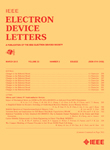
IEEE ELECTRON DEVICE LETTERS
Pioneering Research in Electrical EngineeringIEEE Electronics Device Letters, published by the esteemed IEEE-Institute of Electrical and Electronics Engineers Inc, stands at the forefront of innovation in the field of electrical and electronic engineering. With a rich history spanning from 1980 to 2024, this journal showcases groundbreaking research and letters that significantly contribute to the advancement of electronic, optical, and magnetic materials. Its impressive Q1 rankings in both Electrical and Electronic Engineering and Electronic, Optical, and Magnetic Materials underscore its pivotal role in shaping contemporary academic discourse. The journal maintains a strong position in Scopus rankings, positioned within the top 16% for Electrical and Electronic Engineering and the top 18% for Materials Science, making it a vital resource for researchers, professionals, and students alike. With the absence of open access, it maintains an exclusive repository of high-impact research that experts in the field turn to for the latest insights and developments. IEEE Electronics Device Letters is committed to providing a platform for the dissemination of transformative knowledge that fuels innovation and progress in the ever-evolving landscape of electronics.
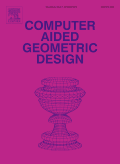
COMPUTER AIDED GEOMETRIC DESIGN
Elevating Design Standards Through Advanced GeometryCOMPUTER AIDED GEOMETRIC DESIGN is a premier journal dedicated to the interdisciplinary field of geometric design, showcasing cutting-edge research that intersects with Aerospace Engineering, Automotive Engineering, and Computer Graphics. Published by ELSEVIER in the Netherlands, this esteemed journal has maintained its relevance and impact since its inception in 1984, with a converged publication strategy continuing through 2024. Currently categorized in Q2 across multiple domains, including Aerospace Engineering and Computer-Aided Design, it reflects a solid standing within the academic community. Researchers can access high-quality articles, contributing to the advancement of applied mathematics and simulation methodologies. Despite not being an open-access journal, it offers significant insights that support innovation in design processes, making it a vital resource for academics, professionals, and students aiming to deepen their understanding and explore new possibilities in geometric design and related fields.
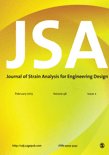
JOURNAL OF STRAIN ANALYSIS FOR ENGINEERING DESIGN
Bridging Theory and Application in Strain Analysis.The Journal of Strain Analysis for Engineering Design, published by SAGE Publications Ltd, is a prestigious academic journal that has been at the forefront of *engineering and applied mathematics* research since its inception in 1965. With a focus on the intricate analysis of strain in engineering design, this journal serves as a vital resource for researchers and professionals seeking to push the boundaries of understanding in mechanics and materials engineering. As of 2023, it enjoys a respectable ranking in its respective fields, including Q2 in *Mechanical Engineering* and *Mechanics of Materials*, and Q3 in *Applied Mathematics* and *Modeling and Simulation*, reflecting its significant contribution to the academic community and relevance in practical applications. Although it is not an open-access journal, its rigorous peer-review process ensures the dissemination of high-quality research. The journal provides a platform for innovative ideas and methodologies, fostering advancements in engineering design and analysis vital for both academia and industry. By bridging theoretical foundations with real-world applications, the Journal of Strain Analysis for Engineering Design remains an essential publication for those dedicated to addressing the complexities of modern engineering challenges.